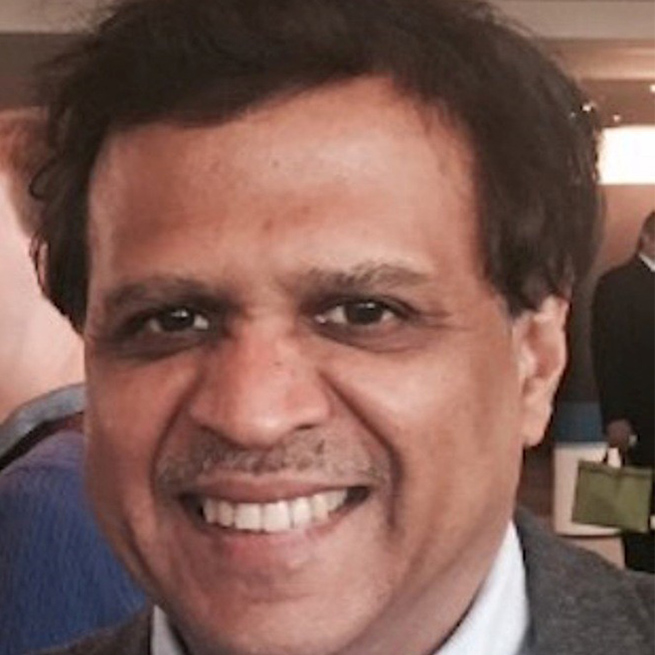Gold – it’s a metal so precious that it has been used to guarantee the value of currencies worldwide. In addition to its monetary worth, this prized natural resource is often interjected into common phrases like “the gold standard,” where it’s used as a benchmark to describe something of the highest quality.
In the medical field, the “gold standard” of patient care and treatment is constantly evolving with the advent of new technologies and therapies. Additionally, the gold standard can differ from country to country, or even within a country. In India, a large and diverse subcontinent, it can be often based on availability of resources, access to care and cost.
A 2018 review article published in the Indian Journal of Ophthalmology1 observed that eye care in India is at a crossroads – between adherence to the older, successful models and adoption of newer innovations and methods. The authors believe that “in the absence of these new approaches, the initial gains in eye care could not be furthered in India”. In this type of landscape, the benchmark – or gold standard – is fluid.
In this cover story, we speak with three Indian vitreoretinal surgeons to explore their views on what is “gold,” and discuss what is needed to raise that benchmark even higher.
Setting the Gold Standard for Diabetic Retinopathy
A 2017 study published in the Journal of Ophthalmology stated that diabetic retinopathy (DR) is the most frequent microvascular complication and its prevalence increases with the duration of diabetes. Meanwhile, the authors revealed that diabetic macular edema (DME), which is the main cause of blindness in working-age adults in industrialized countries, occurs in 7.5% of diabetic patients.2
According to vitreoretinal surgeon Dr. Pushkar Dhir, because India is one of the world’s fastest growing economies, the country shares the burden of being the diabetic capital of the world (along with China and the United States). “The figures don’t make me proud . . . but we share approximately 49 percent of the world’s diabetes burden, with an estimated 72 million cases in 2017 – thus, making DR one of the most prevalent condition in India,” he said.
In 2014, the All India Ophthalmological Society (AIOS) presented results from its Diabetic Retinopathy Eye Screening Study. The authors estimate that by 2030, 79.4 million Indians will be affected by diabetes mellitus, and the majority of those are expected to develop diabetic retinopathy over time.3
Dr. Abhishek Kothari, a consultant vitreoretinal surgeon in Jaipur, India, agrees that one of the most prevalent conditions in India is DR and its complications. He says: “The high prevalence of diabetes, especially in the urban population where I practice, and the low awareness among patients leads to more advanced stages of disease at presentation.”
“Ophthalmology fascinates me . . . [to think] that approximately the 1,100 square mm of area in the eye – which is the door to our mind and body – and the retina can develop so many pathologies,” added Dr. Pushkar. “And just one of these pathologies can just close that door forever. So, it’s important to find out and treat it at the earliest [stage].”
‘Gold’ Begins with the Patient
With so many in the crosshairs of this debilitating disease – and with levels of health literacy and access to care varying widely – educating patients becomes the first step in preventative care. This includes tight metabolic control, control of risk factors, and close monitoring of progression of preexisting DR – as these are indispensable measures to prevent vision loss.2
Physical exercise is also a major proponent of preventing the advance of DR. “I might sound like a philosopher, but these Latin words hold true: ‘menssana in corpore sano’, meaning ‘a sound body has a sound mind’,” said Dr. Pushkar.
Dr. Pushkar sees more than 100 posterior segment patients per day. As a younger doctor in his 30s, he says that this has made him realize that the time to act, to make exercise part of an everyday routine, is now. “You cannot mess up your body – if you ignore your body, then get ready to embrace an uncheerful old age,” he continued. “If you are over 25-years-old, make sure physical activity is part of your routine.” Dr. Pushkar says the best activity that can be done with zero investment is running (or walking).
For Dr. Kothari, the gold standard of treating DR also begins with the patient. To improve compliance, he counsels about the chronic nature of the disease and provides instructions for continued treatment and/or monitoring – this also includes good systemic control of DM. Another patient-focused goal is to reduce the cost and treatment burden, thus improving quality of life.
“The nitty gritty of treating diabetic retinopathy is endless . . . from intravitreal injections to lasers . . . but these are all adjuncts,” added Dr. Pushkar. “The ‘gold’ in ‘golden rule’ is your body – when there’s less fat, the more effectively insulin can work.”
Raising the (Gold) Bar in DR Treatment
Currently, Dr. Kothari treats proliferative diabetic retinopathy (PDR) with laser or surgery as required, while DME is treated with injections of anti-VEGF and steroids, and lasers. “These treatments are effective and have the potential to preserve and improve vision in the vast majority of patients,” he said.
Generally, treatment with laser photocoagulation is used to treat two key complications: retinal neovascularization and severe or clinically significant macular edema. In addition, early panretinal photocoagulation should be considered in those patients at a higher risk of progression, including patients with long-standing diabetes and poor metabolic control, presence of hypertension or advanced renal disease, non-compliance with scheduled visits, PDR in the fellow eye, among other risk factors.2
Studies have also shown that intravitreal therapies with anti-VEGF agents (like aflibercept, ranibizumab, and bevacizumab), have substantially improved the prognosis of potentially severe ocular diseases, including DME. It’s been noted that aflibercept is probably the most cost-effective option because it requires fewer injections, thus reducing workload in a daily practice.2
And while there are gold standard treatments for DR, according to Dr. Kothari, the burden of undertreatment for DME is huge. “Any innovation that addresses compliance and cost of treatment has the potential to become the gold standard in its management,” said Dr. Kothari.
New molecules in the pipeline could improve treatment for DR and its related conditions, like brolucizumab (Novartis; Basel, Switzerland) and abicipar (Allergan; Dublin, Ireland). “One of the major advantages of the newer molecules would be their longer duration of action, leading to less frequent dosing and improved patient compliance,” explained Dr. Kothari. “A port delivery system for ranibizumab, which requires a short procedure but has lasting effects, is also undergoing trials and may prove very useful for DME patients.”
He says it’s heartening to see several such innovations on the horizon – some in phase II and other completing phase III trials: “These developments will improve the quality of care for patients with DME.”
Dr. Pushkar finds new imaging tools critical to assisting with this task. “OPTOS is fantastic,” he said. “One click, and imagine you can scan the whole (200 degrees) of the retina and choroid, leaving very little scope and details missed.” He says in this ever-increasing diabetic world, this machine could be a game changer in screening and early management.
Another innovation set to change the game is artificial intelligence (AI). “There is this new concept which will change the ophthalmic world, from learning to treatment, from doctor diagnosis to a patient coming in with a diagnosis,” said Dr. Pushkar. “There are already applications in the market where you upload scans and get the results. The more revolutionary ones pick up diabetic retinopathy patients, and then with one push of a button, they [the machine] do the lasers too. It is going to be a fascinating future.”
Setting the Gold Standard for Retinal Detachment
Dr. Atul Kumar, chief and professor of ophthalmology at the All India Institute of Medical Sciences AIIMS) in New Delhi, India, says the most common surgical condition in India is rhegmatogenous retinal detachment (RRD), which is closely followed by diabetic traction RD (D-TRD) – a complication of DR.
Research published in the National Medical Journal of India (2015) agrees that RD is the most common indication for retinal surgery in India4, with risk factors including myopia, previous cataract surgery and gender. Worldwide, the annual risk of RD is between 6.3 and 17.9 per 100,000.5
The two most important factors in the development of RRD are retinal breaks and vitreous traction.6 To avoid a profound loss of vision, treating RRD involves prompt – and major – surgery to close the retinal breaks and relieve all vitreous traction. “I treat such retinal detachments with a primary vitrectomy procedure or alternatively, a buckle-vitrectomy principle,” said Dr. Kumar. He says this treatment depends on the location of the breaks and if proliferative vitreoretinopathy (PVR) is present.
The two most commonly utilized techniques for repair of an RRD are scleral buckling and PPV – although there is still no consensus in the vitreoretinal community regarding the primary management of RRD.6 Pars plana vitrectomy (PPV) is often used because it allows for direct relief of vitreous traction associated with retinal breaks. In a paper published in 2018, the authors stated that PPV patients generally tolerate the surgery well (with regard to pain level) and single operation success rates for PPV have been reported to be in the range of 85 to 90 percent. Combined PPV and scleral buckling surgeries showed a trend toward a greater anatomic success rate in pseudophakic patients.6
In the buckle-vitrectomy combined surgery, Dr. Kumar places a belt buckle around the scleral post-equatorial region, followed by micro incision vitrectomy surgery (MIVS), which he says is usually a 23-gauge PPV. “If the retinal detachment is fresh with no PVR, then after complete vitrectomy, fluid-gas-exchange (FGE) and endolaser, I inject C3F8/SF6 gas as a postoperative tamponade,” explained Dr. Kumar. “Gas helps to keep the break closed with its effect on surface tension.”
For intraoperative viewing, Dr. Kumar says that NGENUITY 3D Visualization System (Alcon, Fort Worth, TX, USA) is the gold standard: “[It] helps me obtain higher magnification for viewing as I sit straight and watch the large screen displaying the surgery . . . and it helps me to be sure that the retina has flattened, and that macular holes are bridged by ILM tissue,” he continued. “It looks at any iatrogenic breaks too, which may have been inadvertently created during macular membrane peeling. My residents and fellows also observe the same surgical steps, which add to their surgical training.”
Golden Innovations Could Elevate RD Treatment
According to Dr. Kumar, there are new innovations in the pipeline that can elevate the gold standard of RD surgery further. Things including improved non-toxic dyes – like plant-based dye – would be useful for staining the epiretinal membrane (ERM) and internal limiting membrane (ILM).
“Presently, I use brilliant blue G dye, which is effective and only stains the ILM,” explained Dr. Kumar.
In addition, he says to raise the bar higher, new instrumentation would be helpful: “Multi-function instruments with both aspiration and diathermy for bleeders during diabetic vitrectomies; hooded wide-angled endolights; superiorly designed chandelier lights to prevent glare; and biologic glues/embryonic tissue to seal retinal breaks could be of some additional help.”
In the years to come, new therapeutic innovations will surely continue to advance methods and options of treatment for vitreoretinal conditions – altering the gold standard in the way diseases like DR and complications like RRD are treated. Technologies, like handheld/smartphone imaging devices, machine learning and AI, should also play a key role in providing more access to screenings, creating opportunities for disease prevention, early detection and prompt diagnosis and treatment.
“The nitty gritty of treating diabetic retinopathy is endless . . . from intravitreal injections to lasers . . . but these are all adjuncts. The ‘gold’ in ‘golden rule’ is your body – when there’s less fat, the more effectively insulin can work.”
– Dr. Pushkar Dhir
“While there are gold standard treatments for DR, the burden of undertreatment for DME is huge. Any innovation that addresses compliance and cost of treatment has the potential to become the gold standard in its management.”
– Dr. Abhishek Kothari
“For intraoperative viewing, NGENUITY 3D Visualization System is the gold standard. . . It helps me obtain higher magnification for viewing as I sit straight and watch the large screen displaying the surgery”
– Dr. Atul Kumar
References
1 Das T, Panda L. Imagining eye care in India (2018 Lalit Prakash Agarwal lecture). Indian J Ophthalmol. 2018;66:1532-1538.
2 Corcóstegui B, Durán S, González-Albarrán MO, et al. Update on Diagnosis and Treatment of Diabetic Retinopathy: A Consensus Guideline of the Working Group of Ocular Health (Spanish Society of Diabetes and Spanish Vitreous and Retina Society). J Ophthalmol. 2017;2017:8234186.
3 Gadkari S, Maskati Q, Nayak B. Prevalence of diabetic retinopathy in India: The All India Ophthalmological Society Diabetic Retinopathy Eye Screening Study 2014. Indian J Ophthalmol. 2016; 64(1):38-44.
4 Takkar B, Azad SV, Bhatia I, Azad RV. Late presentation of retinal detachment in India: A comparison between developing nations. Natl Med J India.2017;30:116
5 Chandra A, Banerjee P, Davis D, Charteris D. Ethnic variation in rhegmatogenous retinal detachments. Eye (Lond). 2015; 29(6): 803-807.6 Lin T, Mieler W. Management of Primary Rhegmatogenous RD. Review of Ophthalmology. Published July 15, 2018. Available at https://www.reviewofophthalmology.com/article/management-of-primary-rhegmatogenous-rd. Accessed on 16 November 2018.






